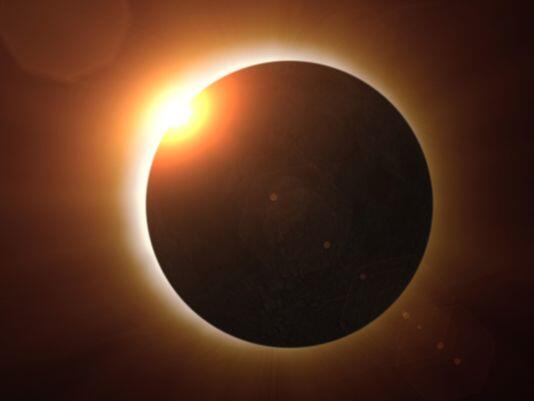The “Big One” is coming.
In astronomical circles there is no greater, more spectacularly stellar event than a total solar eclipse. And at long last, we will have one in the United States in 2017. It anchors a host of other special sights in the sky this coming year that include the planets Venus and Jupiter as well as two potentially solid meteor showers.
The new year begins with a cool conjunction of the waxing crescent moon and the dazzling planet Venus on Jan. 1. Just after sunset, you can’t miss the exquisite pairing in the southwestern sky. On Jan. 2, they’ll be back for an encore – except this time the moon will have shifted between Venus and Mars. You’ll be able to watch the planets of love and war sticking close together all through January. Also note Jan. 31 when the moon comes back around to snuggle up to Venus and Mars once more.
On Feb. 11, we will have a penumbral lunar eclipse. This is when the Moon enters the lighter shadow of the earth. The effect is nowhere near as cool as a total lunar eclipse. In fact, you’ll be hard-pressed to even notice it.
The largest planet in our solar system returns to the evening sky in the spring and is closest to the earth on April 7. You’ll see it rising in the east after sunset and Jupiter will have close encounters with the moon on April 10, May 7 and June 3.
Meteor showers are notoriously fickle events so predicting them is not an exact science. However, I’m hoping that the Orionid meteor shower peaking on Oct. 21 and the Leonid meteor shower on Nov. 17 will be good ones. The moon will be out of the way for both so that the fainter meteors may shine.
The Big One
But the major astronomical event of 2017 – and I have been waiting decades for this – will be the total solar eclipse. On Aug. 21, the Moon will completely block the sun, and best of all, this can be witnessed in the United States, from sea to shining sea. We have not had a total solar eclipse in the mainland U.S. since 1979.
There is a catch: you have to be at the right place at the right time to see it. To experience totality (when the sun is totally blocked by the moon), you will have to be on a narrow path about 75 miles wide between Oregon and South Carolina. Or you could venture farther west to Missouri, Nebraska, Wyoming or Idaho. You can view a detailed map of the eclipse here.
Plan a trip to see this total solar eclipse. Call in sick to work. Play hooky from school. If you need an astronomer’s note, I can provide one. A total solar eclipse will be a sight you will never forget.
Source: USA Today
By: Dean Regas











